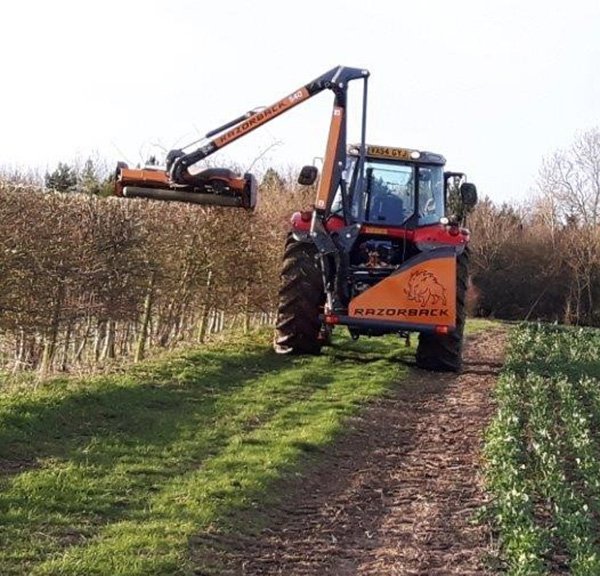The benefits from proper management of hedgerows and headlands are twofold. Not only does good stewardship ensure the preservation of farmland flora and fauna, but an integrated approach means that the farm reaps the rewards commercially in the form of better weed control, a clean, even crop and consistent yields from headland to headland.
Through working closely with experts in the field of conservation we have formulated a strategy that works both for us and for our resident wildlife, representing an achievable model for other commercial enterprises.
Our headlands range between 4m to 6m in width and mowed yearly. The extra width allows for better management of hedgerows and reduces unnecessary vehicle traffic across the cropping area. Included in the headland is an 800mm to 900mm sterile strip that lines the cropped area, preventing the weeds from creeping into the crop. Since the introduction of wide sterile strips, blackgrass and brome numbers have dramatically reduced.
The exposed area of the sterile strip also offers a place for farmland birds, particularly pheasants and partridges, to warm up in the spring sunshine – something which they can often be seen taking advantage of.
The extra width dedicated to headlands is made viable by the improved consistency of crop yield from edge to edge of the field, proving that well managed headlands have the ability to impact profitability across the farm.
Serving as more than just a field boundary, hedges are often the central hub to many species of wildlife found on farms. But that doesn’t mean they can be left to their own devices in the name of nature. Regular maintenance is an important part of providing wildlife the environment they need to flourish.
Our policy is to trim every two years to give smaller birds a tighter network of branches to hide away from predators. Cutting of hedges is reserved for January to coincide with a quieter workload. In the winter, the hedges are also more brittle and in January any berries have come to an end, protecting a valuable winter feed source for many animals.
In an ongoing bid to streamline our operations, we took the decision in 2017 to revise the shape of our cultivated areas by leaving extra wide headlands, typically corners to be dedicated to wildlife. Particularly awkward corners of fields were left fallow with the intention of planting various wild bird feed and flowering mixes. This will provide another source of feed for winter wildlife and encourage pollinators to the farm.
Our farm in Worcestershire has been recognised as being home to several rare arable flora species, both within headlands and also in two sites of special scientific interest (SSSI). This is something we are very keen to preserve and follow stringent guidelines to ensure we protect these sites as an extension of our conservation farming techniques.


